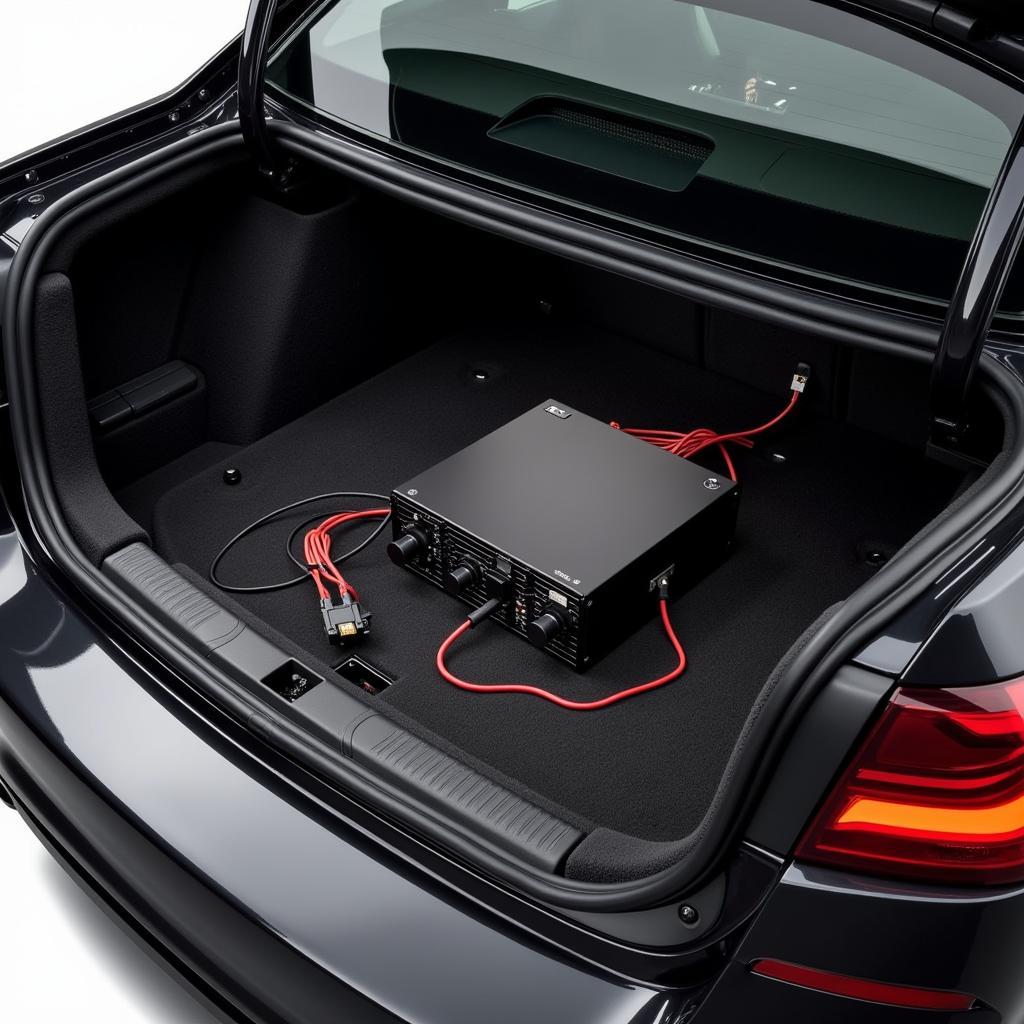The dreaded BMW FRM (Footwell Module) failure can leave you in the dark, literally. From malfunctioning windows and central locking to flickering lights, a faulty FRM can be a major headache. This guide will delve into the common issues, diagnostic procedures, and potential solutions to help you fix BMW FRM problems. bmw frm reapir
The FRM controls many essential functions in your BMW, including lighting, power windows, central locking, and even the wipers. When this module fails, it can disrupt these functionalities, causing inconvenience and safety concerns. Understanding the underlying causes and solutions is crucial for effectively addressing FRM issues. A faulty FRM can manifest in numerous ways, from completely dead modules requiring replacement to intermittent issues that can be challenging to diagnose. This article aims to equip you with the knowledge and resources you need to navigate these challenges.
Understanding the BMW FRM
The FRM is a complex electronic module responsible for controlling various body functions in your BMW. Its location in the footwell makes it susceptible to water damage, a leading cause of FRM failure. bmw frm 修理
Common Symptoms of a Failing FRM
A malfunctioning FRM can manifest in a variety of ways, including:
- Inoperable power windows
- Malfunctioning central locking system
- Flickering or non-functional exterior lights
- Issues with interior lights
- Problems with the windshield wipers
- Error messages on the dashboard
Why Does the BMW FRM Fail?
Several factors can contribute to FRM failure, including:
- Water damage: The FRM’s location in the footwell makes it vulnerable to water ingress, leading to corrosion and short circuits.
- Power surges: Voltage spikes can damage the sensitive electronic components within the FRM.
- Software issues: Corrupted or outdated software can cause the FRM to malfunction.
- Physical damage: Impacts or accidents can damage the FRM itself.
Diagnosing BMW FRM Issues
Diagnosing FRM problems requires specialized diagnostic tools capable of communicating with the module. These tools allow you to read fault codes, monitor live data, and perform tests to pinpoint the issue.
Using Diagnostic Software
Professional-grade diagnostic software, such as those used by BMW dealerships and specialized repair shops, offer comprehensive diagnostic capabilities. These tools allow technicians to access detailed information about the FRM’s status and identify the root cause of the problem.
Checking for Physical Damage
Before diving into software diagnostics, visually inspect the FRM for any signs of physical damage, such as cracks, burns, or corrosion. Water damage is a common culprit, so pay close attention to any signs of moisture or water intrusion.
Fix BMW FRM: Repair and Replacement Options
Depending on the nature of the fault, fixing a BMW FRM can involve various approaches, from software repairs to complete module replacement. bmw frm module fix frm3]
Software Repair
In some cases, FRM issues can be resolved through software reprogramming or repairs. This involves using specialized tools to rewrite the FRM’s software, addressing corruption or other software-related problems.
Module Replacement
If the FRM is beyond repair, replacement is often necessary. This involves installing a new or used FRM and programming it to your vehicle.
DIY vs. Professional Repair
While some minor FRM issues might be addressed by experienced DIYers, it’s generally recommended to seek professional help for complex diagnostics and repairs. FRM repair requires specialized knowledge and tools, and improper handling can exacerbate the problem. carly bmw frm fault]
“A common mistake I see is attempting to repair the FRM without proper diagnostic tools. This can lead to misdiagnosis and further damage,” says John Smith, a seasoned automotive electronics expert with over 20 years of experience. He emphasizes the importance of accurate diagnosis before attempting any repairs.
Preventing Future FRM Issues
Regular maintenance and preventative measures can help prolong the lifespan of your FRM and prevent future problems. bmw e90 frm common fixes]
- Keep the footwell dry: Regularly check for water leaks and address them promptly.
- Avoid power surges: Use surge protectors to protect your vehicle’s electrical system.
- Keep your software updated: Ensure your FRM’s software is up-to-date to minimize the risk of software-related issues.
“Prevention is always better than cure. By taking proactive steps to protect your FRM, you can save yourself time, money, and frustration down the road,” advises Maria Garcia, a leading automotive electrical engineer known for her expertise in vehicle electronics systems.
Conclusion
Fixing a BMW FRM can be a complex undertaking, but with the right knowledge and tools, it can be successfully addressed. Understanding the common causes, symptoms, and repair options empowers you to make informed decisions and get your BMW back on the road.
FAQ
- What is the BMW FRM? The FRM (Footwell Module) controls various body functions in a BMW, such as lighting, windows, and central locking.
- How do I know if my FRM is faulty? Symptoms include malfunctioning windows, central locking issues, flickering lights, and error messages.
- Can I fix my BMW FRM myself? While some minor issues might be addressable by DIYers, professional help is generally recommended.
- How much does it cost to fix a BMW FRM? The cost varies depending on the repair needed, ranging from software fixes to module replacement.
- How can I prevent future FRM problems? Keeping the footwell dry, avoiding power surges, and keeping software updated are key preventive measures.
- What tools are needed to diagnose FRM issues? Specialized diagnostic software is required to communicate with and diagnose the FRM.
- Where is the FRM located in a BMW? It’s located in the footwell, often under the dashboard on the driver’s side.
Need Help?
Contact us via WhatsApp: +1 (641) 206-8880, Email: CARDIAGTECH[email protected] or visit us at 276 Reock St, City of Orange, NJ 07050, United States. We have a 24/7 customer support team.

